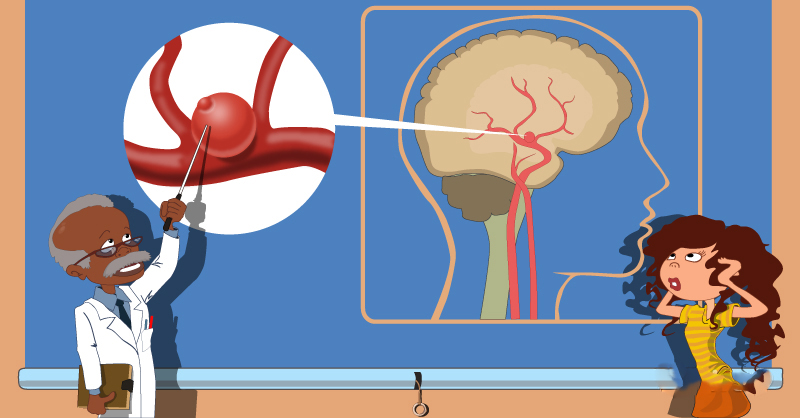A brain aneurysm is a widening of the wall of one of the brain’s arteries. Said widening is caused by weakness in the tissue of that wall, which causes it to bulge. The biggest risk of this condition is the possibility of this weakened tissue breaking, causing a hemorrhage in the brain.
One of the biggest problems with this condition is that it can occur without any warning symptoms or any associated conditions. Some studies show that approximately 5% of the population may have an aneurysm without knowing that they have it.
The ideal situation, obviously, would be to find the aneurysm before it ruptures. However, there are several symptoms which may appear before, while blood is being filtered and before the rupture.
Symptoms of an aneurysm without rupture

As we’ve said, an aneurysm often doesn’t display any symptoms. However, when it grows to the point that it begins putting pressure on brain tissue and nerves, some symptoms can be seen. Among them are:
-pain above and behind one of the eyes;
-dilation of the pupil of one of our eyes;
-numbness or paralysis on one side of your face;
-droopy eyelid on one side of your face.
Symptoms of an aneurysm with leakage

Before the rupture, an aneurysm may begin to show small leakages of blood to the brain. This is the moment which generally precedes a rupture. That’s why it’s highly important to keep in mind. However, this symptom is very isolated and is generally ignored. After a leakage, a very specific and intense pain will occur.
Symptoms of an aneurysm with a rupture

Upon rupturing, the headache of an aneurysm is very intense. Patients who have survived this event describe the pain as the most intense feeling they have ever experienced. In addition to this symptom, which is always present, other symptoms may also occur, such as:
-nausea and vomiting;
-stiff neck;
-blurry vision;
-sensitivity to light;
-convulsions;
-droopy eyelid of one side of the face;
-loss of consciousness or confusion.
Risk factors

Although detection of an aneurysm before leaking or rupturing is quite difficult, there are certain factors which can make us more vulnerable to having this condition. That’s why it’s important to be aware of these risk factors, so that we perform routine checks and stop this condition in time.
There can be two different kinds of risk factors. On one hand, there are those which are caused by our lifestyle and other conditions. And on the other hand, there are those factors which we inherit from birth.
Among those in the first group are hypertension, arteriosclerosis, low estrogen blood levels and severe head injuries.
Although an aneurysm is generally developed in adults, there are risk factors which make us susceptible from birth. Among them are genetic connective tissue conditions, polycystic kidney disease, abnormally narrow aorta, cerebral arteriovenous malformation, and a family history of brain aneurysms.
As we’ve seen, even though detection of a brain aneurysm via symptoms is complicated, we should be prepared to take quick action and avoid a rupture. It’s recommended to find medical help as quickly as possible upon identification of any of these symptoms or when we know that we’re highly exposed to the above risk factors.
If you found this information useful and important, don’t forget to share it with your family and friends!






